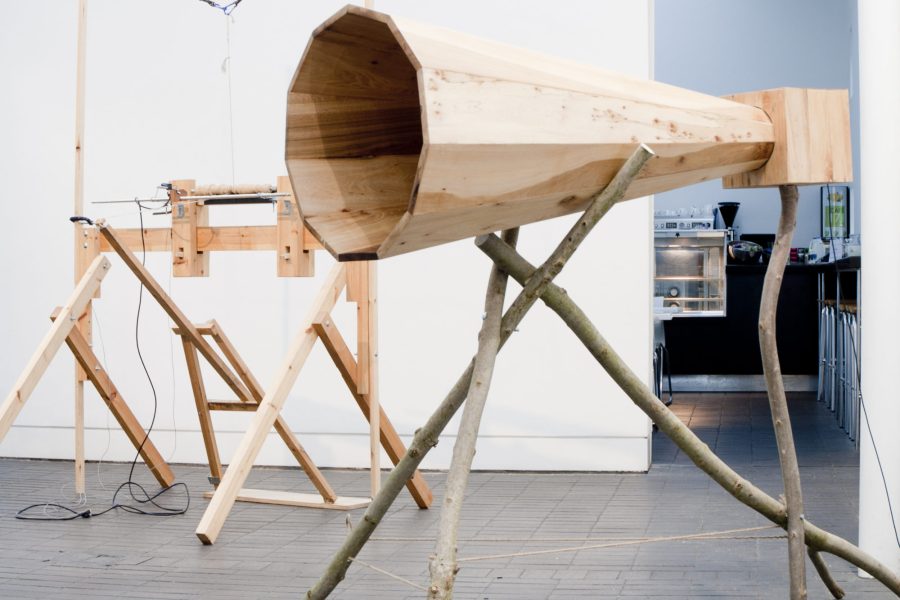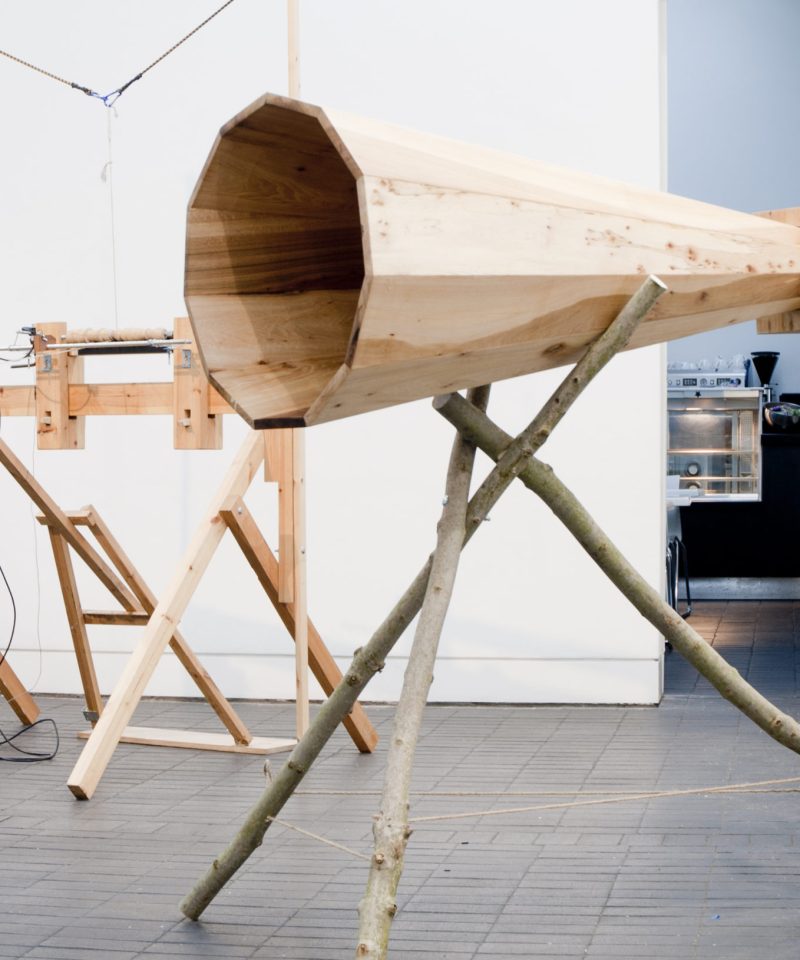How do we experience and understand duration? We’ve made a habit of cataloguing the ephemera of our predecessors, and gesticulated on what we image the origins of the planet to be. I’m sure we’re all familiar with the clock analogy, that if the earth was on a 12 hour clock, with the big bang at midnight, we humans would only just begin to be appearing less than a second before noon.
A few interesting point were raised at the discussion held at the Jerwood Space last night, in a discussion between Joy Sleeman, curators Hayley Skipper and Anthony Mottershead, and TERRA artists Edwina Fitzpatrick and Anne-Mie Mellis. Firstly was Sleeman’s point about how we view things within our own lifetime- speaking of how from our current perspective we understand the artists of the 60s like Smithson who adopted the title of ‘earthworks’. “The current re-writing of land art as a sort of proto-ecological art is a bit of a mis-reading,” Sleeman said before holding up the examples of two books held dear to the environmental movement – Rachel Carson’s Silent Spring, 1962 and Paul Shepherd’s Man in the Landscape, 1967. She pointed out that it’s “easy to remember the discussion around the problem rather than the solutions,” reading each of the author’s suggestions on how to solve the onsetting ecological crisis: for Carson, she promotes bioengineering; for Shepherd, he encourages hunting, ‘killing animals for their own good, and ours.” “Maybe,” as Sleeman said, “we’d have different thoughts about this now.”
The works in TERRA each take a different approach to time – for the Owl Project, it is using wood that has taken years to grow, but then using that towards a more immediate release and impact of the sounds made by the lathe. For Melis, it is the relatively quick generational changes of petunias, while in Anderson’s work it is the thousands of year process that produces coal.
One thing Skipper pointed out in an interview I conducted with her in preparation for the program we’re airing on Resonance FM on the 5th December is her work in Grizedale Forest with the Forestry Commission: in forestry they think in terms of generations, which is 50 years, for any changes to take effect. That at least changes over within a human lifetime before stretching beyond it. The discussion last night highlighted Sleeman’s use of the notion of the Anthropocene in her essay for the Modern British Sculpture catalogue and her TERRA essay – the term designating that now human’s effect on the planet will register on geological record. As Sleeman notes in her writing on TERRA, Jerram’s Hiroshima piece is the smallest work in the show, but also the event that might mark the beginning of the Anthropocene era.
Recently, in light of the show I’ve been re-reading Kurt Vonnegut’s Galapagos, 1985, which is set in the year 1,001,985. The narrator has watched over humanity’s evolution following a financial disaster and a biological epidemic that has rendered most of humanity sterile in 1986. Taking Darwin’s theories to a pointedly ridiculous extreme, a handful of shipwrecked people on the island of Galapagos become the only people to carry on the species, eventually evolving in to furry, primarily aquatic beings. What the narrator singles out as the 20th century human’s evolutionary disadvantage is: their big brains. Our descendants have small, sleek skulls, and don’t waste any time on silly doubts.
It’s a hyperbolic example, but the point is the same; the distance and perspective from our own, immediate present can give a different angle on events, objects, and how we understand experience. One audience member pointed to Stonehenge and pre-historical chalk drawings, asking whether these could in the present also be considered land art. The same drawn out perspective in Vonnegut is a similar root for the discussion of Actor Network Theory and ‘object-oriented thinking’ that was brought up last night, looking at the human as just another factor within an entire range of elements, and just another part of the ecosystem. To me, the shift away from not idealizing the landscape – and in that same move keeping it as a comfortable ‘other’- is necessary, to temper the romanticism of the eco movements of the 60s; but I’d also be weary of the thinking that effectively excuses human behavior of the past century as simply the way our species operates. “Why are we not ‘natural’?” Fitzpatrick asked last night. Give me a few thousand years and I’ll get back to you.

